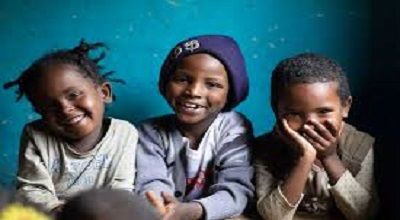Brief Police
The government released the most recent State of the Nation’s Children (SONC) report in December 2022. This study gives readers a thorough picture of children’s life in Ireland, including significant data on their well-being, behavioral and educational outcomes, and interactions with their parents and peers. SONC aims to inform government policy on children, young people, and families. It is a resource that is often utilized by researchers, policymakers, and civil society.
Demographics
A variety of sociodemographic data regarding children’s lives were revealed in the report’s conclusions. 1,201,618 children were expected to be residing in Ireland in 2022. It represents 23.6% of the entire population. It is projected that there will be 586,783 girls and 614,835 boys among all children in 2022. 16.5% of children were raised by lone parents. Children who lived in lone-parent families included 19.5% of Traveler children, 20.9% of foreign-born children, and 24.4% of children with disabilities.
There were 14,223 kid travelers in Ireland in 2016. This represented 1.2% of the total number of children and 45.9% of all Travelers. There were 79,536 children of foreign nationals in Ireland in 2016. , and, and, and, and, and, and, and, and, and, and, and, and, and, and, and. The next most prevalent nationality was British or Northern Irish (11.4% of the total). In addition, there were 75,963 children in Ireland. Who had a disability, or 6.4% of all children. as an as a.
Safety
Children aged 10 to 17 reported feeling safe in their neighborhood 90.2% of the time in 2018. Children who are Travelers, immigrants, or who have a handicap or a chronic condition are less likely. Then all other children feel secure where they reside. The demographic most likely to feel insecure where they live are children who travel.
Education
The SONC research revealed 3,973 preschool services under contract to provide the Early Childhood Care and Education (ECCE) Programme to 107,778 children in the 2021/22 preschool year, which is of special importance to our industry. Before starting primary school, ECCE gives kids their first official introduction to early learning. It is offered without charge to all children 2 years and 8 months of age and attempts to bridge. The achievement gap between more and less privileged youngsters. Before higher capitation was incorporated into Core Funding in late 2022. Of the settings contracted to implement the ECCE program, 34.8% had met the basic capitation status and 65.2% had met the higher capitation level.
In the SONC research, it was shown that 89.3% of kids aged 10 to 17 said. They had three or more friends of the same gender. Children of immigrants had the lowest percentage of three or more friends of the same gender in their friendship group. In addition, 31.1% of kids in this age group said they had experienced bullying at school recently. Children who had recently traveled were the group most likely to report experiencing bullying at school.
Poverty
13.6% of children were deemed to be in danger of poverty in 2021. Compared to the general population. Children are more likely to be impoverished. Kids between the ages of 12 and 17 had the greatest “at risk of poverty” percentage. In 2021, 18.5% of children in this age range faced the threat of poverty. This contrasts with rates of 13.3% for people aged 6 to 11 and 8.4% for children under the age of 5. The households with the highest risk of poverty were those with 1 adult and children under the age of 18, with a rate of 22.8%. Contrast this with a rate of 17.3% for families with 2 adults and 3 or more children under the age of 18, and a rate of 7.0% for households with 2 adults and 1 to 2 children under the age of 18.
Children are particularly susceptible to ongoing poverty. In 2021, 4.0% of the population as a whole lived in persistent poverty, and 5.2% of children did as well. 2006 saw the debut of the State of the Nation’s Children: Ireland Report (SONC). Since then, it has been released every two years in both hardcopy and Digital versions. Assembling data from different national and international sources. This page contains links to all of the report’s earlier releases.
A large portion of the data is accessible in an open, machine-readable format in accordance with the government’s Open Data Program. It is created by the Research and Evaluation Unit of the Department of Children. Equality, Disability, Integration, and Youth (DCEDIY). The Central Statistics Office’s (CSO) PxStat system is where most of the data is kept. The complete report is available here.
